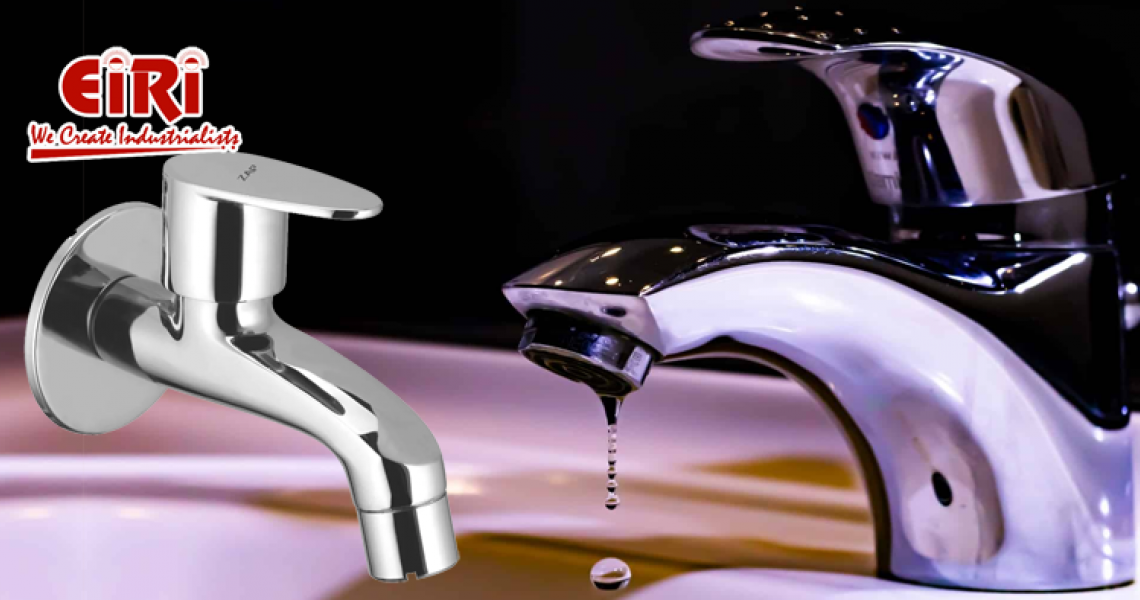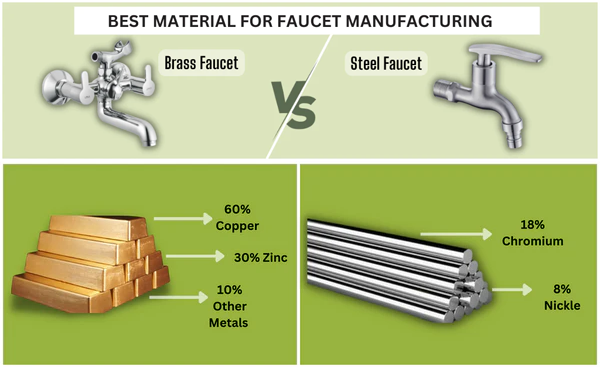Faucet (Water Tap) Manufacturing Business - Market Overview and Future Growth

A faucet, an essential component of plumbing systems, serves as the gateway to water supply. Comprising elements like the spout, handles, lift rod, cartridge, aerator, mixing chamber, and water inlets, it orchestrates the controlled release of water. Faucets, commonly known as taps or cocks, encompass devices designed for regulating water flow through the manipulation of a handle.
The India Faucet Market is poised to reach US$ 475.88 million in 2023, projecting a robust CAGR of 5.2% through 2033, expected to reach US$ 790.06 million.
Handles, crafted from materials like brass, zinc, or plastic, are pivotal in initiating the valve's action. These valves masterfully govern water flow, adapting seamlessly to various conditions when the handle is turned. The body of the faucet, typically constructed from brass, may also feature die-cast zinc or chrome-plated plastic. In kitchen sinks, the prevalence of ball faucets, characterized by a single handle sliding over a rounded ball-shaped cover above the spout, is notable, marking a transition from traditional washer-based designs.
Faucet Type:
Brass Faucets:
Elegant and timeless, brass faucets are crafted from a durable copper-zinc alloy. Known for their warm, golden appearance, these faucets add a touch of sophistication to any space. Highly resistant to corrosion and tarnishing, brass faucets are durable and long-lasting, making them a popular choice for both traditional and modern settings. While they may require regular cleaning to maintain their luster, brass faucets offer a range of finishes and styles, allowing for versatile design possibilities.
Steel Faucets:
Sleek and contemporary, steel faucets bring a modern aesthetic to kitchens and bathrooms. Crafted from stainless steel or other steel alloys, these faucets offer durability and resistance to wear. With a smooth, polished appearance, steel faucets are easy to clean and maintain. While they may be more budget-friendly compared to brass faucets, steel faucets still provide a variety of finishes and designs, making them a practical and stylish choice for those seeking a sleek and functional fixture.

The faucets market experiences robust growth propelled by global shifts in lifestyle preferences. The surge in demand is driven by a collective inclination toward functional and aesthetically pleasing kitchens and bathrooms. Modernized spaces, coupled with a plethora of material and design options, cater to consumer preferences for personalized faucets. Factors such as comfort, convenience, and compact designs play a pivotal role in consumer purchasing decisions. Increased disposable income, the integration of sensors and advanced features, the rise of e-commerce channels, strategic marketing endeavors, and evolving consumer preferences collectively contribute to the positive trajectory of the faucets market.
Moreover, the advent of smart products promises an enhanced user experience, presenting lucrative opportunities for market players in the forecast period from 2022 to 2029. As the faucets market evolves, it continues to mirror the dynamic landscape of modern living and the ever-growing pursuit of innovative, convenient, and water-efficient solutions.
Indian Faucet Market Overview
The India Faucet Market is poised for substantial growth between 2023 and 2029, driven by a surge in the number of households and a growing appetite for premium faucets. The market is expected to witness significant expansion, reaching a valuation of US$ 475.88 million in 2023 and projecting a robust CAGR f 5.2% from 2023 to 2033. By 2033, it is anticipated to soar to US$ 790.06 million.
The market dynamics are shaped by a convergence of factors, including increased investment in luxury, the introduction of technologically advanced products with sleek designs, and a growing emphasis on hygiene and sustainable energy. Manufacturers are responding to consumer preferences for elegant restrooms by incorporating contemporary and efficient designs, leveraging cutting-edge technologies to offer diverse tap options for both residential and commercial spaces.
The popularity of bathroom taps is on the rise, fueled by advancements in technology and the pursuit of cleanliness and water conservation. The market is witnessing the emergence of light taps designed to enhance cleanliness and water conservation, contributing to the overall expansion of the market.
Key drivers for the India Faucet Market include robust growth in the real estate industry, rising disposable income, increasing urbanization, changing consumer preferences, evolving lifestyles, and exposure to international brands. The market caters to a diverse range of consumers, with both luxury and economic faucets available for various income groups. Notable brands contributing to the Indian faucet market include Kohler, Waterman, Jaquar, Cavier, Hindware, Cera, and Roca.
Globally, the faucet market reached USD 19.3 billion in 2021, with an expected annual growth rate of 7.4% from 2022 to 2030. The commercial segment leads the market for faucets, and offline distribution channels dominate the industry landscape. The India Faucet Market, buoyed by these factors, stands at the forefront of innovation and consumer-centric offerings, anticipating significant growth in the coming years.
Market Driving Factors
Surging Demand for Touchless Taps in Commercial Construction Boosts Market Expansion
The ongoing surge in commercial construction fuels the need for touchless taps, driven by a desire to minimize physical contact. With touchless technology, the spread of germs is curtailed, especially crucial in pandemic times. Sensor-activated taps gain significance in medical facilities, preventing infection transmission during surgeries. The rapid growth of hotels, medical centers, shopping malls, and airports in India, the U.S., and globally fuels the demand for touchless taps. For instance, Radisson Hotel Group's introduction of 'Radisson Individuals' in October 2020 resulted in 10 hotel signings across Europe, the Middle East, and Africa, underscoring the rising demand for touchless taps and propelling the growth of the electric taps market.
Increasing Homeownership and Growing Aesthetic Preferences
India is experiencing a notable upswing in housing demand, attributed to a rise in household income, as noted by the World Bank. The report emphasizes that these households, particularly in urban India, are prioritizing water and sanitation facilities. The higher and middle-income segments are actively investing in enhancing the aesthetics of their bathrooms and kitchens. In response to the escalating demand, faucet manufacturers are introducing a diverse array of competitively priced products tailored to the preferences of Indian consumers. This trend is anticipated to propel the overall growth of the Indian faucet market in the forecast period.
The global faucet market is evolving with lifestyle changes, reflecting a shift towards functional and aesthetically pleasing kitchens and bathrooms. Driven by consumer preferences for personalized faucets, the market experiences robust growth, propelled by factors such as comfort, convenience, and compact designs. Increased disposable income, integration of sensors, and strategic marketing contribute to this positive trajectory. The advent of smart products presents lucrative opportunities for market players. In India, the faucet market is set for substantial growth between 2023 and 2029, driven by an increasing number of households and a growing appetite for premium faucets. The market is expected to reach US$ 790.06 million by 2033, fueled by factors like rising disposable income, urbanization, and changing consumer preferences. Key brands include Kohler, Jaquar, and Cera. The market stands at the forefront of innovation, anticipating significant expansion in the coming years.










